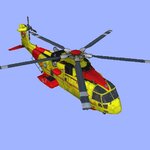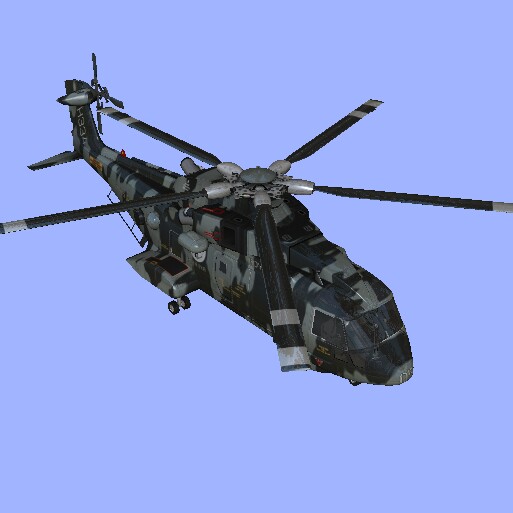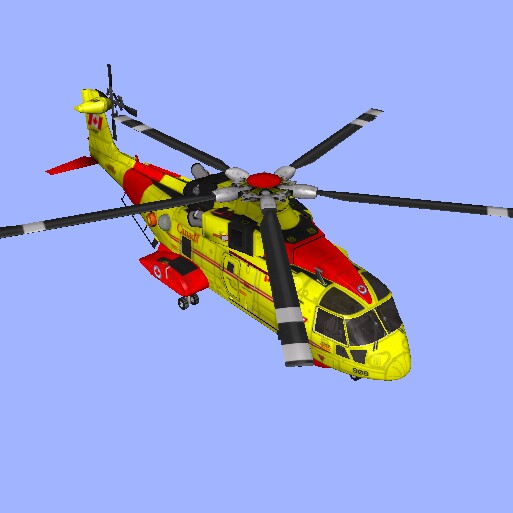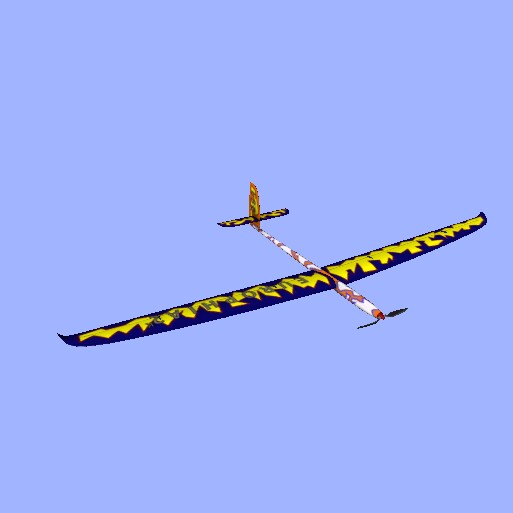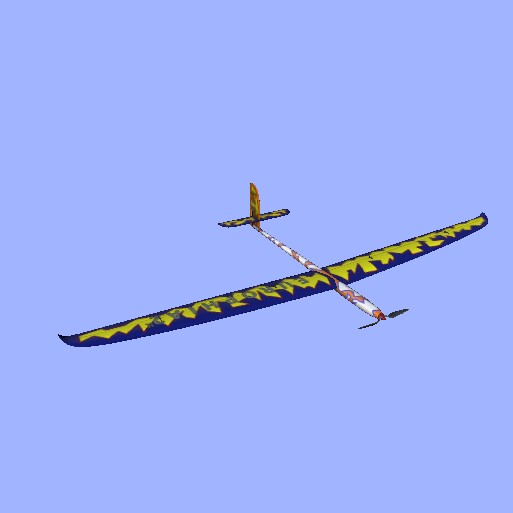Aircraft Model: Agusta Westland EH101 (AW101)
History:
The AW101 medium-lift helicopter is manufactured by AgustaWestland International (formerly EH Industries), a joint venture company formed by Agusta of Italy and UK company GKN Westland. The EH101 helicopter program has been developed for both civil and military applications.
For civil applications the helicopter is available in the commercial utility version with rear ramp for passengers or freight, or in the Heliliner variant for passenger transport. For military applications the EH101 (now renamed AW101) has been developed in a utility version or a naval variant.
The AW101 program was given the go-ahead by the UK and Italian Governments with the signing of an agreement on 25 January 1984. This provided for joint funding of the project through development to the production stage. The first pre-production EH101, PP1, made its maiden flight in October 1987. The civil variant first flew in 1997.
Over 140 AW101 variants have been ordered and more than 120 delivered. The commercial utility version is in service with the Tokyo Metropolitan Police. The military version is in service with the UK Royal Air Force (as the AH101 Merlin HC3), the UK Royal Navy (HMA1 Merlin), Canadian armed forces (AH101 Cormorant for search and rescue) and the Italian Navy (in anti-submarine, airborne early warning, utility and amphibious support roles).
The EH101 helicopter program has been developed for both civil and military applications.
It has also been ordered by Denmark (14 search and rescue and troop transport variants), Portugal (12 for search and rescue and fishery protection, first delivered December 2004) and Japan (14 for transport and mine countermeasures).
A version of the helicopter, the US101, is on offer for the US military market. In February 2005, the helicopter was chosen as the replacement helicopter for the US Marine One presidential transport fleet requirement. The helicopter, designated VH-71, made its maiden flight in July 2007. Four helicopters were involved in the flight test program.
The helicopter was proposed by Team US101, led by Lockheed Martin and was supposed to enter service in 2009. In June 2009, however, the US Navy terminated the entry of US101 into service. It decided to use its funds to upgrade the existing VH-3D and VH-60N helicopter fleets.
AW101 commercial utility:
The AW101 commercial utility variant can fulfil a number of roles - search and rescue (SAR), air ambulance, firefighting, police and security operations, disaster relief, offshore operations, cargo / transport and commuter services.
As air ambulance, the cabin has room for a medical team and 16 stretchers. For SAR there is room to accommodate at least 20 survivors and for disaster relief as many as 55 evacuees.
A version of the EH101 medium-lift helicopter is on offer for the US military market.
The utility helicopter has a rear ramp and can carry rappelling kit, underslung load provision, search light, rescue hoist and stretchers. The heavy duty cabin floor and ramp are equipped with flush tie-down points, a roller conveyer for palleted freight and a cargo winch for non self-loading freight.
An underslung load hook is capable of carrying external loads up to 12,000lb, and the load measurement is displayed in the cockpit. A rescue hoist and a hover trim controller are fitted at the cargo door.
Design:
The rugged modular structure incorporates crashworthy and damage-tolerant features, including a five-blade main rotor, four-blade teetering rotor and main lift frame which includes multiple primary and secondary load paths.
The fuselage is mainly of aluminium-lithium construction. The aerodynamic rotor blades are constructed from carbon / glass with nomex honeycomb and rohacell foam. Active vibration control of the structural response (ACSR) uses a vibration cancelling technique.
The helicopter operates in temperatures ranging from -40°C to +50°C. An ice protection system allows operation in known icing conditions. An engine inlet particle separator system provides protection in sandy environments. High flotation tyres and efficient landing gear permit operation from soft or rough terrain.
Cockpit:
The AW101 is powered by three General Electric CT7-6 turboshaft engines, rated at 1,491kW (2,000shp).
The cockpit is equipped with dual flight controls for the pilot and co-pilot but the helicopter is capable of being flown by a single pilot. The Smiths Industries electronic instrument system includes six high-definition full colour displays.
The civil AW101 is equipped with an integrated avionics system based on an ARINC 429 databus. Systems include: CMC Electronics (formerly BAE Systems Canada) CMA-900 flight management system (FMS), Rockwell Collins communications system, Honeywell weather radar and Northrop Grumman Italia LISA-4000 strapdown AHRS (automatic heading reference system).
Engine:
The EH101 is powered by three General Electric CT7-6 turboshaft engines, rated at 1,491kW (2,000shp). Each engine is fed from a dedicated self-sealing fuel tank using dual booster pumps and a cross feed system. The three tanks hold 3,222l of fuel. The fourth tank acts as a reservoir supply to top up the main tanks during flight.
There is capacity for an additional transfer tank to increase the helicopter's range. A computerised fuel management system is fitted. Military variants have the capability for hover in-flight refuelling (HIFR).
Performance:
The AW101 transport helicopter can fly at the rate of 10.16m/s. The maximum speed of the helicopter is 280km/h. The maximum range and service ceiling of the AW101 helicopter are 1,389km and 4,575m respectively, while the maximum endurance is six hours. The helicopter weighs around 8,600kg and the maximum take-off weight is 14,600kg
Original Aircraft - Design: AgustaWestland International Aircraft Corporation
3D - Model and Texturing: maxkop
Physical Aircraft Model: maxkop, Mikeymike21, maxx2504
G3.5 - Beta Tester: nemo_uk
RC - Function: Collective; Nick; Roll; Tail; Retractable Landing Gears (2-Pos. Switch)
Width: 2.21 (m)
Length: 2.63 (m)
Weight: 16.50 (kg)
Power: JetCat SPH5; 36:1
Blade Length: 900 (mm)
Blade Weight: 280 (g)
Original Aircraft Data: Agusta Westland EH101 (AW101)
Dimensions:
Length, Rotors Turning: 22.8 m (74.8ft)
Height Overall: 6.65 m (21.75ft)
Length Fuselage: 19.63 m (64.4ft)
Width, Overall: 5.67 m (18.6ft)
Main Rotor Diameter: 18.6 m (61ft)
Tail Rotor Diameter: 4 m (13.11ft)
Number of Blades (Main / Tail): 5/4
Cabin Dimensions:
Length: 6.5 (m)
Maximum Width: 2.5 (m)
Width at Floor: 2.25 (m)
Height: 1.8 (m)
Volume: 31.5 (m³)
Weights:
Maximum Gross Take-Off Weight (Internal / External Load): 14,600 kg (32,188lb)
Basic Empty Weight: 8,600 kg (18,960lb)
Maximum Useful Load: 6,000 kg (13,228lb)
Sling Load: 4,536 kg (10,000lb)
Engines:
Type: 3 x GE CT7-T6A
Take-Off, Rating: 3 x 1491 kW (3 x 2,000shp)
Maximum Continuous, Rating: 3 x 1283 kW (3 x 1,720shp)
Performance:
Maximum Speed: 280 km/h (150kt)
Rate of Climb: 10.16 m/s (2,000ft/min)
Hovering IGE: 2,316 m (7,600ft)
Hovering OGE: 1,067 m (3,500ft)
Service Ceiling: 4,575 m (15,000ft)
Maximum Range (Internal Fuel Tank): Over 1,389 km (750nm)
Maximum Endurance (Internal Fuel Tank): 6 hours
Project Data:
Start: July 2008
End: August 2010
Have fun with the Agusta Westland EH101,
Max
History:
The AW101 medium-lift helicopter is manufactured by AgustaWestland International (formerly EH Industries), a joint venture company formed by Agusta of Italy and UK company GKN Westland. The EH101 helicopter program has been developed for both civil and military applications.
For civil applications the helicopter is available in the commercial utility version with rear ramp for passengers or freight, or in the Heliliner variant for passenger transport. For military applications the EH101 (now renamed AW101) has been developed in a utility version or a naval variant.
The AW101 program was given the go-ahead by the UK and Italian Governments with the signing of an agreement on 25 January 1984. This provided for joint funding of the project through development to the production stage. The first pre-production EH101, PP1, made its maiden flight in October 1987. The civil variant first flew in 1997.
Over 140 AW101 variants have been ordered and more than 120 delivered. The commercial utility version is in service with the Tokyo Metropolitan Police. The military version is in service with the UK Royal Air Force (as the AH101 Merlin HC3), the UK Royal Navy (HMA1 Merlin), Canadian armed forces (AH101 Cormorant for search and rescue) and the Italian Navy (in anti-submarine, airborne early warning, utility and amphibious support roles).
The EH101 helicopter program has been developed for both civil and military applications.
It has also been ordered by Denmark (14 search and rescue and troop transport variants), Portugal (12 for search and rescue and fishery protection, first delivered December 2004) and Japan (14 for transport and mine countermeasures).
A version of the helicopter, the US101, is on offer for the US military market. In February 2005, the helicopter was chosen as the replacement helicopter for the US Marine One presidential transport fleet requirement. The helicopter, designated VH-71, made its maiden flight in July 2007. Four helicopters were involved in the flight test program.
The helicopter was proposed by Team US101, led by Lockheed Martin and was supposed to enter service in 2009. In June 2009, however, the US Navy terminated the entry of US101 into service. It decided to use its funds to upgrade the existing VH-3D and VH-60N helicopter fleets.
AW101 commercial utility:
The AW101 commercial utility variant can fulfil a number of roles - search and rescue (SAR), air ambulance, firefighting, police and security operations, disaster relief, offshore operations, cargo / transport and commuter services.
As air ambulance, the cabin has room for a medical team and 16 stretchers. For SAR there is room to accommodate at least 20 survivors and for disaster relief as many as 55 evacuees.
A version of the EH101 medium-lift helicopter is on offer for the US military market.
The utility helicopter has a rear ramp and can carry rappelling kit, underslung load provision, search light, rescue hoist and stretchers. The heavy duty cabin floor and ramp are equipped with flush tie-down points, a roller conveyer for palleted freight and a cargo winch for non self-loading freight.
An underslung load hook is capable of carrying external loads up to 12,000lb, and the load measurement is displayed in the cockpit. A rescue hoist and a hover trim controller are fitted at the cargo door.
Design:
The rugged modular structure incorporates crashworthy and damage-tolerant features, including a five-blade main rotor, four-blade teetering rotor and main lift frame which includes multiple primary and secondary load paths.
The fuselage is mainly of aluminium-lithium construction. The aerodynamic rotor blades are constructed from carbon / glass with nomex honeycomb and rohacell foam. Active vibration control of the structural response (ACSR) uses a vibration cancelling technique.
The helicopter operates in temperatures ranging from -40°C to +50°C. An ice protection system allows operation in known icing conditions. An engine inlet particle separator system provides protection in sandy environments. High flotation tyres and efficient landing gear permit operation from soft or rough terrain.
Cockpit:
The AW101 is powered by three General Electric CT7-6 turboshaft engines, rated at 1,491kW (2,000shp).
The cockpit is equipped with dual flight controls for the pilot and co-pilot but the helicopter is capable of being flown by a single pilot. The Smiths Industries electronic instrument system includes six high-definition full colour displays.
The civil AW101 is equipped with an integrated avionics system based on an ARINC 429 databus. Systems include: CMC Electronics (formerly BAE Systems Canada) CMA-900 flight management system (FMS), Rockwell Collins communications system, Honeywell weather radar and Northrop Grumman Italia LISA-4000 strapdown AHRS (automatic heading reference system).
Engine:
The EH101 is powered by three General Electric CT7-6 turboshaft engines, rated at 1,491kW (2,000shp). Each engine is fed from a dedicated self-sealing fuel tank using dual booster pumps and a cross feed system. The three tanks hold 3,222l of fuel. The fourth tank acts as a reservoir supply to top up the main tanks during flight.
There is capacity for an additional transfer tank to increase the helicopter's range. A computerised fuel management system is fitted. Military variants have the capability for hover in-flight refuelling (HIFR).
Performance:
The AW101 transport helicopter can fly at the rate of 10.16m/s. The maximum speed of the helicopter is 280km/h. The maximum range and service ceiling of the AW101 helicopter are 1,389km and 4,575m respectively, while the maximum endurance is six hours. The helicopter weighs around 8,600kg and the maximum take-off weight is 14,600kg
Original Aircraft - Design: AgustaWestland International Aircraft Corporation
3D - Model and Texturing: maxkop
Physical Aircraft Model: maxkop, Mikeymike21, maxx2504
G3.5 - Beta Tester: nemo_uk
RC - Function: Collective; Nick; Roll; Tail; Retractable Landing Gears (2-Pos. Switch)
Width: 2.21 (m)
Length: 2.63 (m)
Weight: 16.50 (kg)
Power: JetCat SPH5; 36:1
Blade Length: 900 (mm)
Blade Weight: 280 (g)
Original Aircraft Data: Agusta Westland EH101 (AW101)
Dimensions:
Length, Rotors Turning: 22.8 m (74.8ft)
Height Overall: 6.65 m (21.75ft)
Length Fuselage: 19.63 m (64.4ft)
Width, Overall: 5.67 m (18.6ft)
Main Rotor Diameter: 18.6 m (61ft)
Tail Rotor Diameter: 4 m (13.11ft)
Number of Blades (Main / Tail): 5/4
Cabin Dimensions:
Length: 6.5 (m)
Maximum Width: 2.5 (m)
Width at Floor: 2.25 (m)
Height: 1.8 (m)
Volume: 31.5 (m³)
Weights:
Maximum Gross Take-Off Weight (Internal / External Load): 14,600 kg (32,188lb)
Basic Empty Weight: 8,600 kg (18,960lb)
Maximum Useful Load: 6,000 kg (13,228lb)
Sling Load: 4,536 kg (10,000lb)
Engines:
Type: 3 x GE CT7-T6A
Take-Off, Rating: 3 x 1491 kW (3 x 2,000shp)
Maximum Continuous, Rating: 3 x 1283 kW (3 x 1,720shp)
Performance:
Maximum Speed: 280 km/h (150kt)
Rate of Climb: 10.16 m/s (2,000ft/min)
Hovering IGE: 2,316 m (7,600ft)
Hovering OGE: 1,067 m (3,500ft)
Service Ceiling: 4,575 m (15,000ft)
Maximum Range (Internal Fuel Tank): Over 1,389 km (750nm)
Maximum Endurance (Internal Fuel Tank): 6 hours
Project Data:
Start: July 2008
End: August 2010
Have fun with the Agusta Westland EH101,
Max

